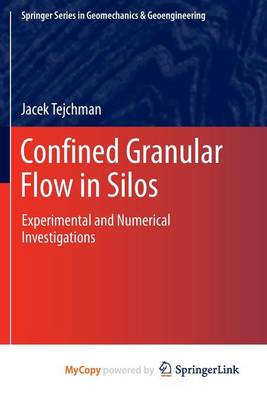Springer Series in Geomechanics and Geoengineering
2 total works
During confined flow of bulk solids in silos some characteristic phenomena can be created, such as: sudden and significant increase of wall stresses, different flow patterns, formation and propagation of wall and interior shear zones, fluctuation of pressures and, strong autogenous dynamic effects.
These phenomena have not been described or explained in detail yet. The main intention of the experimental and theoretical research presented in this book is to explain the above mentioned phenomena in granular bulk solids and to describe them with numerical FE models verified by experimental results.
Continuous and Discontinuous Modelling of Fracture in Concrete Using FEM
by Jacek Tejchman and Jerzy Bobinski
The book analyzes a quasi-static fracture process in concrete and reinforced concrete by means of constitutive models formulated within continuum mechanics. A continuous and discontinuous modelling approach was used. Using a continuous approach, numerical analyses were performed using a finite element method and four different enhanced continuum models: isotropic elasto-plastic, isotropic damage and anisotropic smeared crack one. The models were equipped with a characteristic length of micro-structure by means of a non-local and a second-gradient theory. So they could properly describe the formation of localized zones with a certain thickness and spacing and a related deterministic size effect. Using a discontinuous FE approach, numerical results of cracks using a cohesive crack model and XFEM were presented which were also properly regularized. Finite element analyses were performed with concrete elements under monotonic uniaxial compression, uniaxial tension, bending and shear-extension. Concrete beams under cyclic loading were also simulated using a coupled elasto-plastic-damage approach. Numerical simulations were performed at macro- and meso-level of concrete. A stochastic and deterministic size effect was carefully investigated. In the case of reinforced concrete specimens, FE calculations were carried out with bars, slender and short beams, columns, corbels and tanks. Tensile and shear failure mechanisms were studied. Numerical results were compared with results from corresponding own and known in the scientific literature laboratory and full-scale tests.

